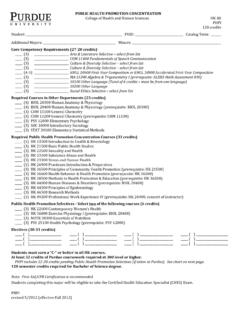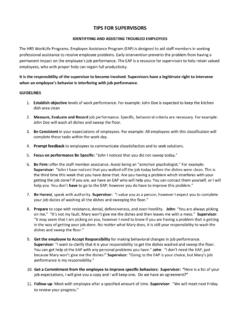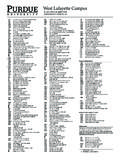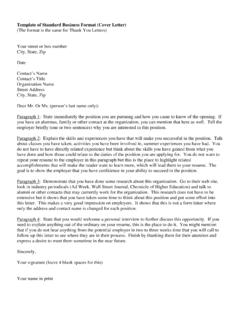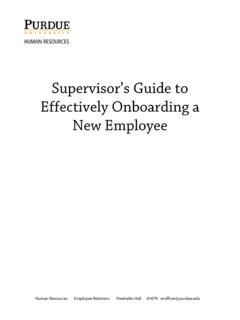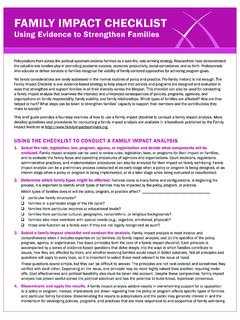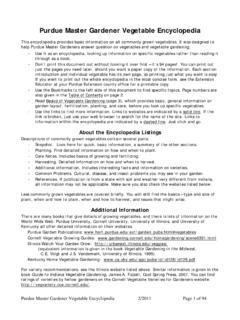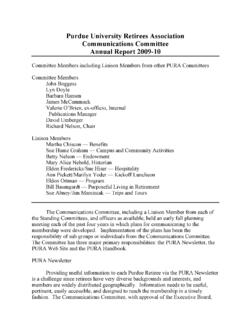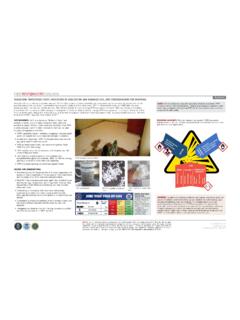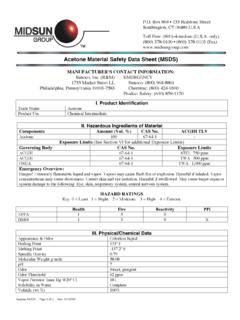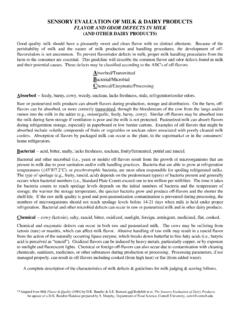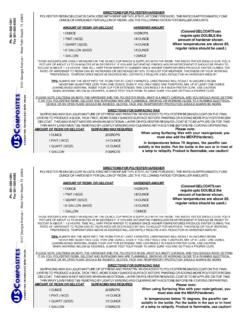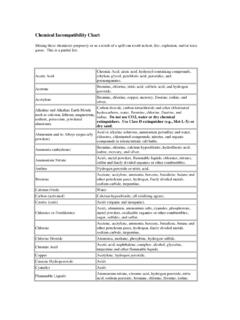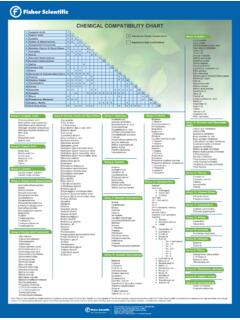Transcription of Understanding Toxic Substances - Purdue University
1 Understanding Toxic Substances An Introduction to Chemical Hazards in the Workplace Table of Contents Routes of What makes a chemical Toxic ?..4 How can Toxic Substances harm the body?..7 What are the different forms of Toxic materials?..10 What are exposure limits?..11 How can exposure be measured and monitored?..12 How can exposures be reduced?..14 Checklist for researching Toxic Additional Adapted from a booklet developed by the California Hazard Evaluation and Information Service (HESIS) Occupational Health Branch, a joint service of the California Department of Health Services and the Dept. of Industrial Relations, Division of Occupational Safety and Health (Cal-OSHA). Original authors were Jon Rosenberg, MD, Mark Nicas, MS, MPH and Yo Yomashiro University of California, Davis 1 Introduction Hazardous Substances are used in many workplaces today. Working people are discovering that they need to know more about the health effects of chemicals, which they use or may be exposed to on the job.
2 Textbooks, fact sheets, and material safety data sheets (MSDSs) provide important information, but they are often written in hard-to-understand technical language. To help you better understand technical information about hazardous workplace chemicals, this booklet explains how chemicals can affect the body, what to look for when reading health information, the different types of exposure limits for chemicals in the workplace, tips on how to know if you are exposed, what you can do to reduce exposure, and where to go for additional information. What makes a chemical Toxic ? The toxicity of a substance is its ability to cause harmful effects. These effects can strike a single cell, a group of cells, an organ system, or the entire body. A Toxic effect may be visible damage, or a decrease in performance or function measurable only by a test. All chemicals can cause harm. When only a very large amount of the chemical can cause damage, the chemical is considered to be practically non- Toxic .
3 When a tiny amount is harmful, the chemical is considered to be highly Toxic . The toxicity of a substance depends on three factors: its chemical structure, the extent to which the substance is absorbed by the body, and the body's ability to detoxify the substance (change it into less Toxic Substances ) and eliminate it from the body. Are " Toxic " and "hazardous" the same? No. The toxicity of a substance is the potential of that substance to cause harm, and is only one factor in determining whether a hazard exists. The hazard of a chemical is the practical likelihood that the chemical will cause harm. A chemical is determined to be a hazard depending on the following factors: toxicity: how much of the substance is required to cause harm, route of exposure: how the substance enters your body, dose: how much enters your body, duration: the length of time you are exposed, reaction and interaction: other Substances you are exposed to at the same time, and, sensitivity: how your body reacts to the substance compared to other people.
4 2 Some chemicals are hazardous because of the risk of fire or explosion. These are important dangers, but are considered to be safety rather than Toxic hazards. The factors of a Toxic hazard are more fully explained below. Why are some chemicals more harmful than others? The most important factor in toxicity is the chemical structure of a substance-what it is made of, what atoms and molecules it contains and how they are arranged. Substances with similar structures often cause similar health problems. However, slight differences in chemical structure can lead to large differences in the type of health effect produced. For example, silica in one form (amorphous) has little effect on health, and is allowed to be present in the workplace at relatively high levels. After it is heated, however, it turns into another form of silica (crystalline) that causes serious lung damage at levels 200 times lower than amorphous silica.
5 Routes of exposure How can chemicals enter the body? Exposure normally occurs through inhalation, skin or eye contact, and ingestion. Inhalation The most common type of exposure occurs when you breathe a substance into the lungs. The lungs consist of branching airways (called bronchi) with clusters of tiny air sacs (called alveoli) at the ends of the airways. The alveoli absorb oxygen and other chemicals into the bloodstream. Some chemicals are irritants and cause nose or throat irritation. They may also cause discomfort, coughing, or chest pain when they are inhaled and come into contact with the bronchi (chemical bronchitis). Other chemicals may be inhaled without causing such warning symptoms, but they still can be dangerous. Sometimes a chemical is present in the air as small particles (dust or mist). Some of these particles, depending on their size, may be deposited in the bronchi and/or alveoli.
6 Many of them may be coughed out, but others may stay in the lungs and may cause lung damage. Some particles may dissolve and be absorbed into the blood stream, and have effects elsewhere in the body. Skin Contact The skin is a protective barrier that helps keep foreign chemicals out of the body. However, some chemicals can easily pass through the skin and enter the bloodstream. If the skin is cut or cracked, chemicals can penetrate through the skin more easily. Also, some caustic Substances , like strong acids and alkalis, can chemically burn the skin. Others can irritate the skin. Many chemicals, particularly organic solvents, dissolve the oils in the skin, leaving it dry, cracked, and susceptible to infection and absorption of other chemicals. 3 Eye Contact Some chemicals may burn or irritate the eye. Occasionally they may be absorbed through the eye and enter the bloodstream. The eyes are easily harmed by chemicals, so any eye contact with chemicals should be taken as a serious incident.
7 Ingestion The least common source of exposure in the workplace is swallowing chemicals. Chemicals can be ingested if they are left on hands, clothing or beard, or accidentally contaminate food, drinks or cigarettes. Chemicals present in the workplace as dust, for example, metal dusts such as lead or cadmium, are easily ingested. What makes a chemical Toxic ? Dose: How much is too much? In general, the greater the amount of a substance that enters your body, the greater is the effect on your body. This connection between amount and effect is called the dose-response relationship . For example, organic solvents such as toluene, acetone , and trichloroethylene all affect the brain in the same way, but to different degrees at different doses. The effects of these solvents are similar to those that result from drinking alcoholic beverages. At a low dose, you may feel nothing or a mild, sometimes pleasant ("high") sensation.
8 A larger dose may cause dizziness or headache. With an even larger dose you may become drunk, pass out, or even stop breathing. When you inhale a Toxic chemical, the dose you receive depends on four factors: (1) the level (concentration) of chemical in the air; (2) how hard (fast and deep) you are breathing, which depends on your degree of physical exertion; (3) how much of the chemical that is inhaled stays in your lungs and is absorbed into your bloodstream; and (4) how long the exposure lasts. It is safest to keep exposure to any Toxic substance as low as possible. Since some chemicals are much more Toxic than others, it is necessary to keep exposure to some Substances lower than others. The threshold level is the lowest concentration that might produce a harmful effect. It is different for every chemical. The threshold for one chemical may differ from person to person (see "Sensitivity").
9 If the concentration of a chemical in the air is kept well below the threshold level, harmful effects probably will not occur. Levels above the threshold are "too much." However, this means only that there is a possibility that health effects might occur, not that such effects definitely will occur (see "What are exposure limits?"). Duration: How long is too long? The longer you are exposed to a chemical, the more likely you are to be affected by it. The dose is still important-at very low levels you may not experience any effects no matter how long you are exposed. At higher concentrations you may not be affected following a short-term exposure, but repeated exposure over time may cause harm. 4 Chemical exposure which continues over a long period of time is often particularly hazardous because some chemicals can accumulate in the body or because the damage does not have a chance to be repaired.
10 The combination of dose and duration is called the rate of exposure. The body has several systems, most importantly the liver, kidneys and lungs, that change chemicals to a less Toxic form (detoxify) and eliminate them. If your rate of exposure to a chemical exceeds the rate at which you can eliminate it, some of the chemical will accumulate in your body. For example, if you work with a chemical for eight hours each day, you have the rest of the day (16 hours) to eliminate it from your body before you are exposed again the next day. If your body can't eliminate all the chemical in 16 hours and you continue to be exposed, the amount in the body will accumulate each day you are exposed. Illness that affects the organs for detoxification and elimination, such as hepatitis (inflammation of the liver), can also decrease their ability to eliminate chemicals from the body. Accumulation does not continue indefinitely.
